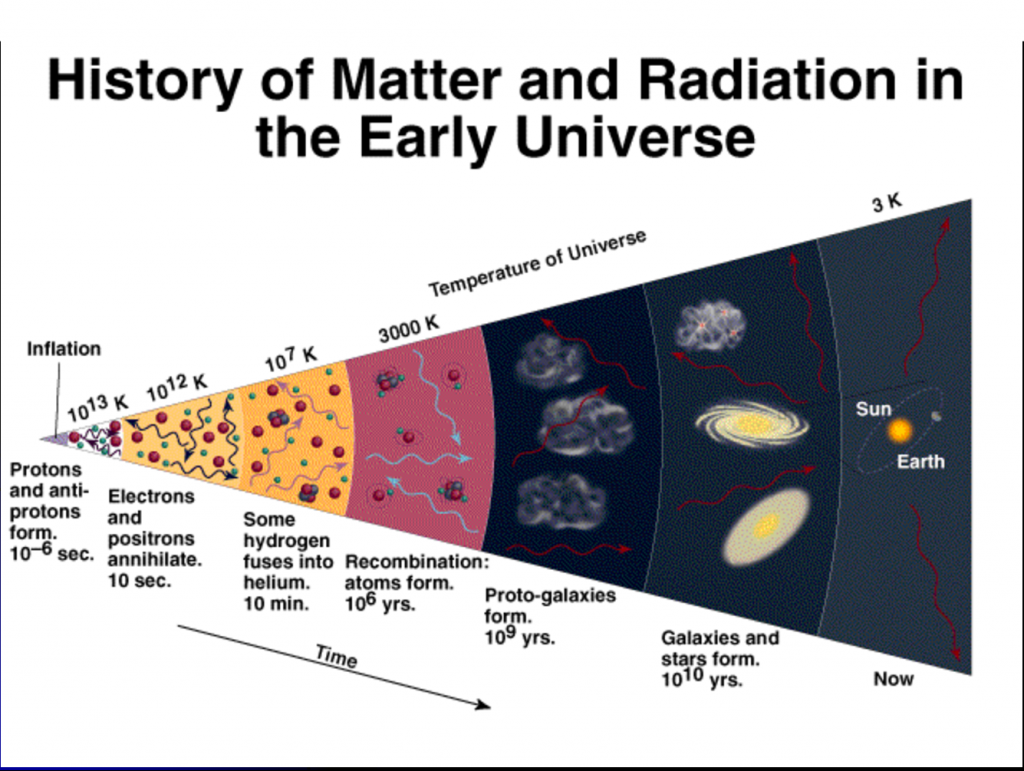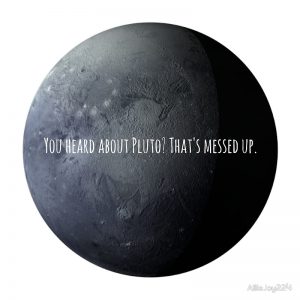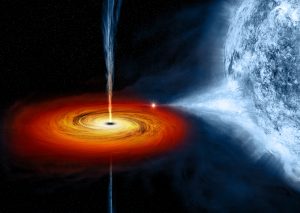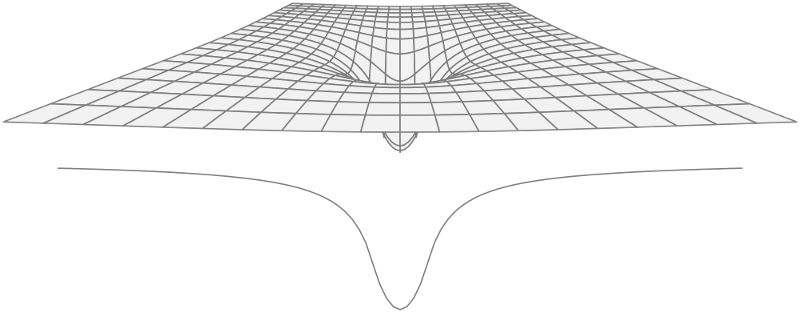A century ago the topic, the birth of the universe, was considered unfit for scientific study. It wasn’t until Hubble’s discovery that the universe was expanding, that this topic was scientifically investigated1. The expansion of the universe led to idea that the universe sprang to existence from a single point in time, in an event called the Big Bang.

With the advancement of science and technology we have been able to investigate our universe within fractions of a second after the Big Bang. By exploring the early universe we can gain new insight on how our universe was shaped and what the universe could look like in the future.

Figure 1. Solar System Formation Outline
Source: Docstoc.com. http://pics-about-space.com/solar-system-evolution-timeline?p=1#img278342502844603781 (accessed Nov 6, 2016).
The study of the early universe is called the Big Bang Theory1. A second after the big bang the universe was a 10 billion degree sea of protons, neutrons, electrons and other particles2. At the first fraction of a second the universe was so hot that particles were constantly being created and annihilated, preventing the formation of stable and neutral atoms. It wasn’t until about 10-10 seconds after the Big Bang, that it became “cool” enough for atoms to actually form1. Putting this into perspective, the “cool” temperature was about 1012 kelvins1.

Figure 2. Particle Creation (a) and Annihilation (b). Particles being converted to photons, and vice versa.
Source: Wesley, A. Nuclear Energy. http://hendrix2.uoregon.edu/~imamura/122/lecture-6/nuclear.html (accessed Nov 6, 2016). Copyright by Wesley, A.
However, even at this point the atoms created weren’t stable. Finally, five minutes after the Big Bang, when the temperature of the universe was about a billion kelvins (109 k), the protons and neutrons were able to fuse together to form heavier nuclei1. For about 380,000 years the universe was a mush of opaque hot plasma2. According to NASA, the early universe wasn’t transparent because “the free electrons […] caused light (photons) to scatter, the way sunlight scatters from the water droplets in clouds3.”

Figure 3: Summary of The Big Bang Theory
Source: The Birth of the Universe; The Kingfisher Young People’s Book of space. http://www.crystalinks.com/bigbang.html (accessed Nov 6, 2016)
Although a lot of questions about our universe are still unanswered, having some insight on the first few seconds and minutes after the Big Bang is incredible. This insight is what allowed us to determine the age of our universe. We all know from thermodynamics that our universe is constantly becoming more disordered, perhaps with further research we can understand this disorder and investigate the birth of our universe more and possibly determine the future of our universe.
Until our next Journey, live long and prosper.
By Flora Iranmanesh
Sources:
- Bennet; Donahue; Schneider; Voit. The Cosmic Perspective: Stars & Galaxies; Pearson Learning Solutions, Boston, 2015; pp 306-325.
- NASA Science Beta. Universe: The Big Bang. https://science.nasa.gov/astrophysics/focus-areas/what-powered-the-big-bang (accessed Nov 6, 2016)
- com. What is the Big Bang Theory. http://www.space.com/25126-big-bang-theory.html (accessed Nov 6, 2016)






